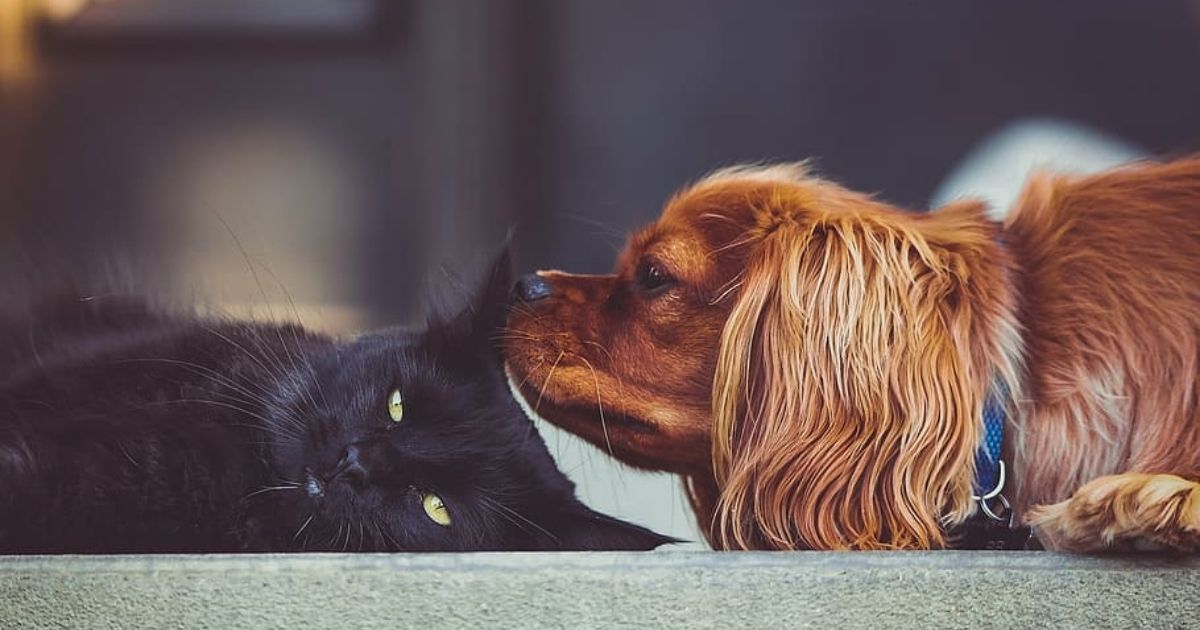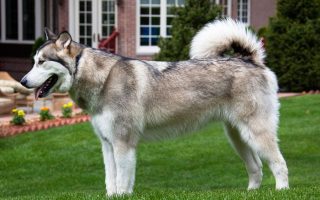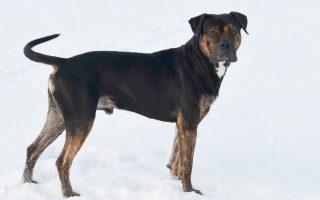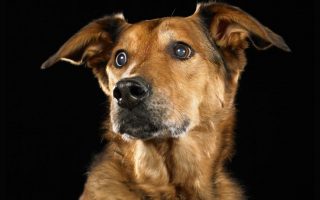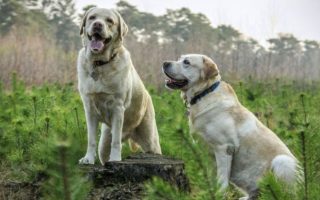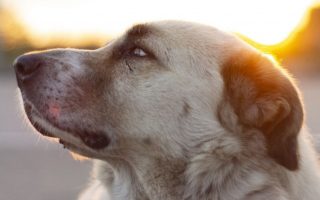There are several reasons why you may want to have one of the breeds of dogs with low prey drive.
Having said that, there are challenges you are likely to face with dogs that even good training will not clear out. Some of these habits are instinctive, not developed.
One such habit is the prey drive. Every dog has a prey drive stemming from its carnivorous roots.
Early breeders often have a purpose for each dog breed, and a lot of dogs accompanied hunters in search of prey.
The hunting instinct doesn’t leave these dogs, even when they evolve into household companions.
This becomes a problem when you have to restrain them from bolting after prey when outdoors, or if you want to get other pets. You wouldn’t want a case of dog-and-cat enmity in your household.
Fortunately, while there are dogs with high prey drives, others are quite the opposite.
So, what does low prey drive mean?
Dogs with low prey drive don’t feel the need to dash after an animal and tend to be more laid-back.
Their hunting instinct is so low, they would sleep side-by-side with cats and not make a fuss.
A low prey drive isn’t synonymous with laziness—although some of these dogs would rather lie on the carpet than go for an intense jog.
Why would you want a dog with a low prey drive?
If you want a dog but can’t cope with the hunting spirit of high prey dogs, then consider their low prey counterparts.
These peaceful dogs are Gandhis of the doggy world and would fit you if you have a mellow personality, a calm lifestyle, and prefer the indoors.
Top 15 Dogs With Low Prey Drive
What dog breed has the lowest prey drive? To answer this question, we have compiled the top-15 strong contenders for this position.
1. Cavalier King Charles Spaniel
- Group: Toy
- Life Expectancy: 9 – 14 years
- Weight: 5.9 – 8.2 kg
- Height: 12–13 inches
- Temperament: Affectionate, Gentle, Graceful
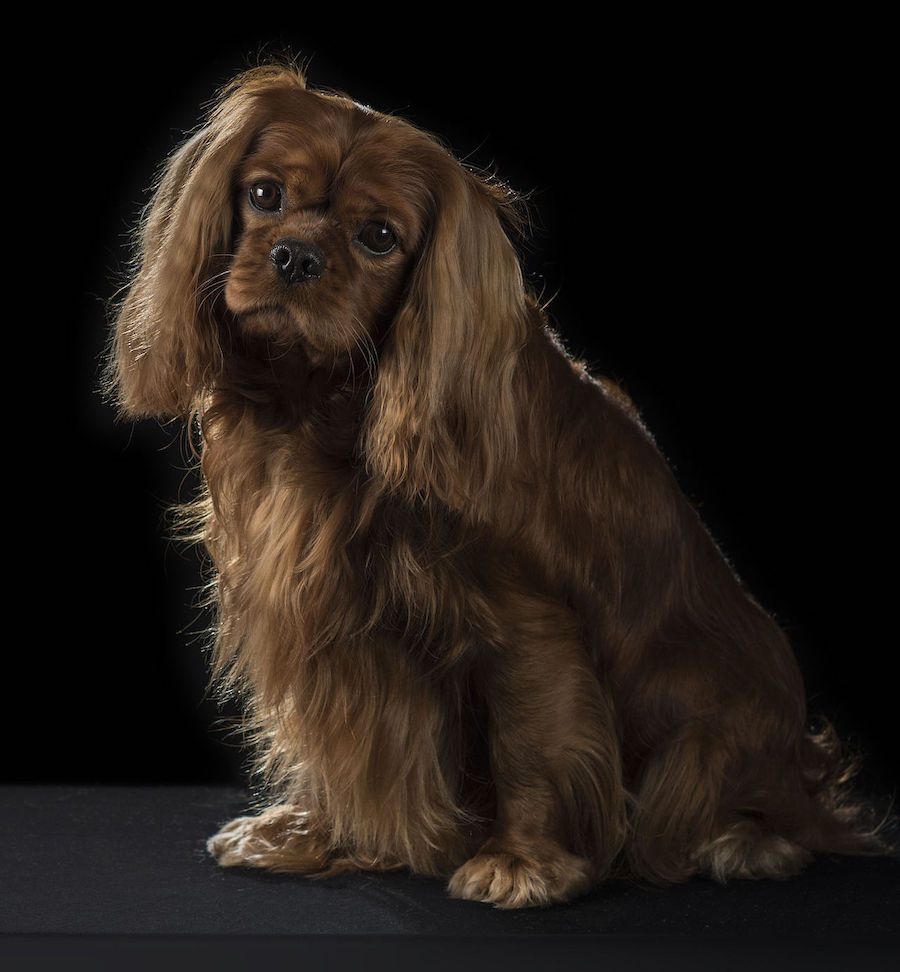
The first canine on our list of dogs with low prey drive is the Cavalier King Charles Spaniel.
A companion to the core, King Charles Spaniel would rather cozy up on your laps than go after prey.
After all, bribing you to get a treat is worth more than the energy expended in chasing a cat. They are house dogs too, a trait that makes them prefer indoor living.
Not surprisingly, bribing is what they do best. With their round, dark eyes, small stature, and lovely coat, they have an overload of cuteness to use as an advantage.
They weren’t bred to be hunters, and they sure don’t need to be one.
The Cavalier King Charles Spaniel hasn’t been around for so long, but is famous, thanks to their beautiful physique and sweet temperament.
True to their name, this dog breed is regal, dignified, and intelligent.
They are also soft, sensitive, and love to be with their owners, factors that make them less eager to be hunters.
This doesn’t mean they have no prey drive, though. As earlier mentioned, all dogs have a prey drive.
Don’t be surprised if your Cavalier King Charles Spaniel tries to chase small prey like rabbits and birds.
You still need to keep them leashed during the few moments they are outdoors.
2. Maltese
- Group: Toy
- Life Expectancy: 12-15 years
- Weight: 3–4 kg
- Height: 8–10 inches (20–25 cm)
- Temperament: Affectionate, Playful, Easygoing
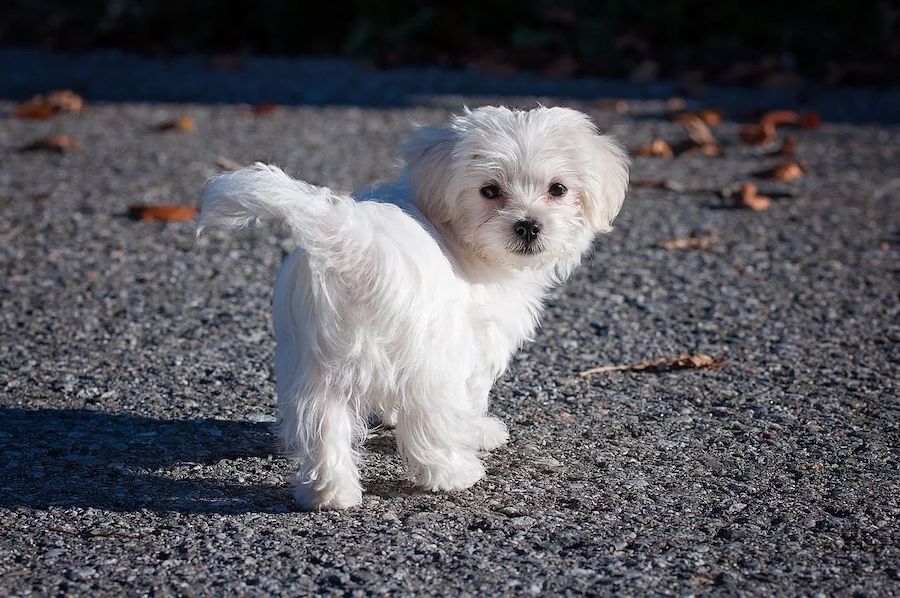
The Maltese is a tiny dog who sees cats as pals, not prey. While there are some toy breeds who hunt, the Maltese have no such inclination.
Laziness is an invisible vest they proudly wear on their miniature coat, and they are easygoing with everyone they come across.
It doesn’t matter whether these people are humans or animals.
Don’t think their laziness is a sign of weakness, though. In spite of their size, the Maltese is courageous and brave.
They have participated (and continue to participate) in competitions involving agility.
What they lack in prey drive, they make up in love. In history, the Maltese were named ‘The Comforter’, and they play that role as therapy dogs today.
Therapy dogs contribute to the mental well-being of people by showing affection, comfort, and total support.
They especially help people prone to anxiety. This is a better service than scaring the life out of an innocent animal.
An ancient dog breed, the Maltese has been around for like 2,000 years. They were present in the works of old creatives in places like Ancient Egypt and Greece.
Even then, people loved the Maltese. For instance, Greeks gave their Maltese dogs proper burials (with tombs and all) while Egyptians made artifacts resembling this breed.
With their small size, eagerness to please nature, and trainability, the Maltese works well for apartment dwellers and those who fancy the indoors.
3. Papillon
- Group: Toy
- Life Expectancy: 13 – 15 years
- Weight: 3.6 – 4.5 kg
- Height: 8 – 11 inches
- Temperament: Intelligent, Energetic, Friendly
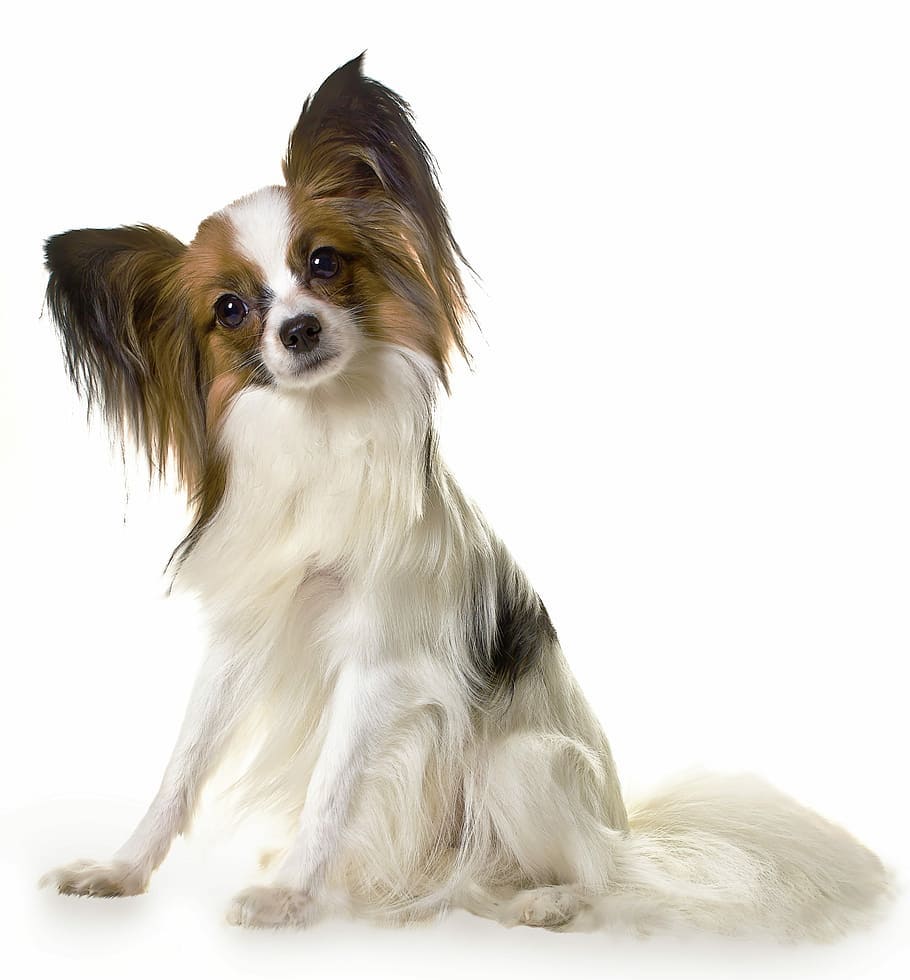
The Papillon is well known for the butterfly ears, an attribute that gave them their name.
The word ‘Papillon’ is french for ‘butterfly’, and the ears of this dog breed are so attractive, you’d want to reach out and feel it.
Far from being hunting dogs, the Papillon was bred to be a companion and has maintained that role. Their size adds to their companion resume.
However, this doesn’t make them lazy lapdogs. The Papillon is energetic, outgoing, and active.
He isn’t your best option if you want a dog to cuddle while binge-watching reruns of your favorite TV show.
Papillon Dogs prefer being outside making friends and looking for something to do.
However, they enjoy companionship and may be up for a snuggle when their needs are met.
Papillons relate well with cats, especially when you do your job well in training them.
They may have some problems with respecting a cat’s boundaries at times but tend not to view felines as prey.
They won’t extend this same courtesy to rodents, though.
Low prey notwithstanding, the Papillon is no friend of rats. This can work to your advantage if you have a vermin situation.
This breed has existed since the 16th where they featured in portraits made that period.
Once called the dwarf spaniel due to his size, the Papillon has evolved over the years. However, he maintained his companionship core.
4. Pomeranian
- Group: Toy
- Life Expectancy: 12 – 16 years
- Weight: 1.9 – 3.5 kg
- Height: 7 – 12 inches
- Temperament: Intelligent, Playful, Friendly
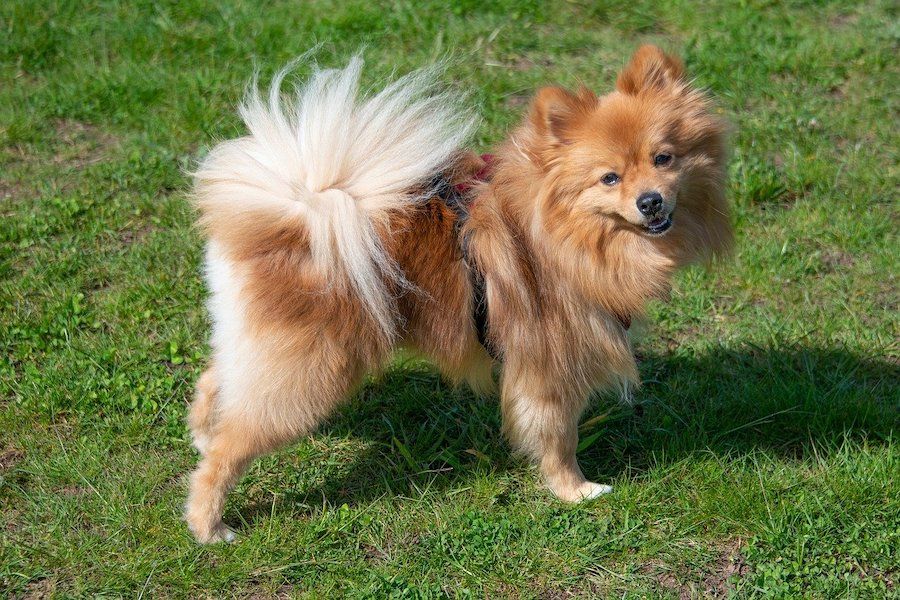
Pomeranian is the smallest of the Spitz family. Like the aforementioned dog breeds with low prey drive, the Pomeranian was bred to be a companion.
Rather than being predators, some animals view this breed as prey.
An example is a hawk—when the Pomeranian is outdoors, owners need to watch out for large birds who may feel tempted to snatch this little dog like a chick.
The Pomeranian isn’t deterred by his size, though. In fact, he behaves like a big dog.
Similar to the biblical David, the Pomeranian challenges dogs twice his size. He is not one to be underestimated.
Laziness and weakness aren’t characteristics of this breed. They are independent dogs, as well, an extension of their strong spirit.
They are suitable for busy folks who may not have time for a needy dog.
Curious, alert, and intelligent, the Pomeranian can keep himself busy when his owner is absent.
This independent streak means you should assert your position as a leader while training them. Failure to do this and you may not like the outcome.
The Pomeranian got his name from Pomerania, the European province he originated from.
He got early fame, which trickled down to our century. Historical icons like Martin Luther, Isaac Newton, Michelangelo, and Mozart reportedly owned a Pomeranian.
5. Pug
- Group: Toy
- Life Expectancy: 12 – 15 years
- Weight: 6 – 8 kg
- Height: 10 – 13 inches
- Temperament: Clever, Charming, Sociable
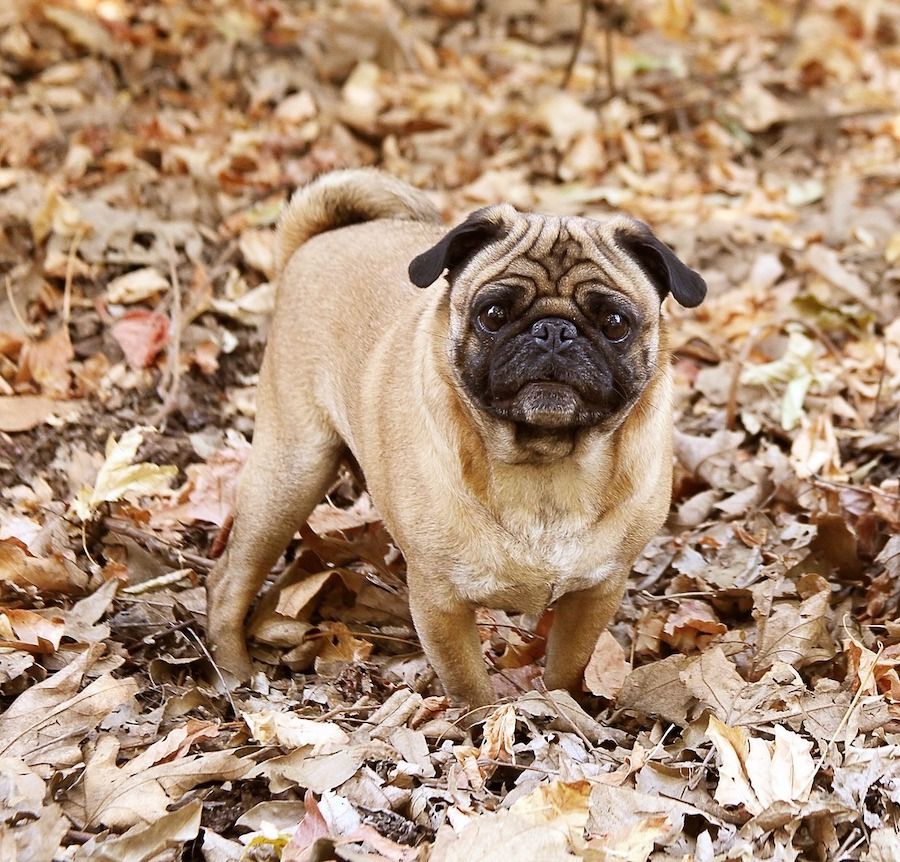
The Pug is another companion toy dog that makes it easy for its owners to love them.
A lapdog from his roots, the Pug is a great family pet, loving friend, and humorous animal.
His comical nature makes him more appealing. Be sure to get a lot of laughter with the Pug.
A sensitive breed who’d stay calm on your laps while you read or watch TV on a Sunday afternoon, the Pug is a good apartment dog.
Their low barking tendency makes them more suitable for the indoors. Hunting isn’t among the list of their strong qualities, so cats and other pets are safe with the Pug.
Their easy, laid-back nature makes them good first-time dogs. Even if you have no experience in dog training, you can work with the Pug and gain results.
They do have some training challenges, but those are not roadblocks.
The Pug came from China and was around during the Han Dynasty where he enjoyed royal treatment as the companion of Emperors.
In the 16th century, they migrated to Europe from China. They shone like stars in the Victorian Era and left their marks on artworks of that period.
Even Queen Victoria owned Pugs. It is said that she was quite passionate about Pugs. Perhaps there is something royal about this breed, after all.
6. Golden Retriever
- Group: Sporting
- Life Expectancy: 10 – 12 years
- Weight: 29 – 34 kg
- Height: 20 – 24 inches
- Temperament: Intelligent, Friendly, Trustworthy
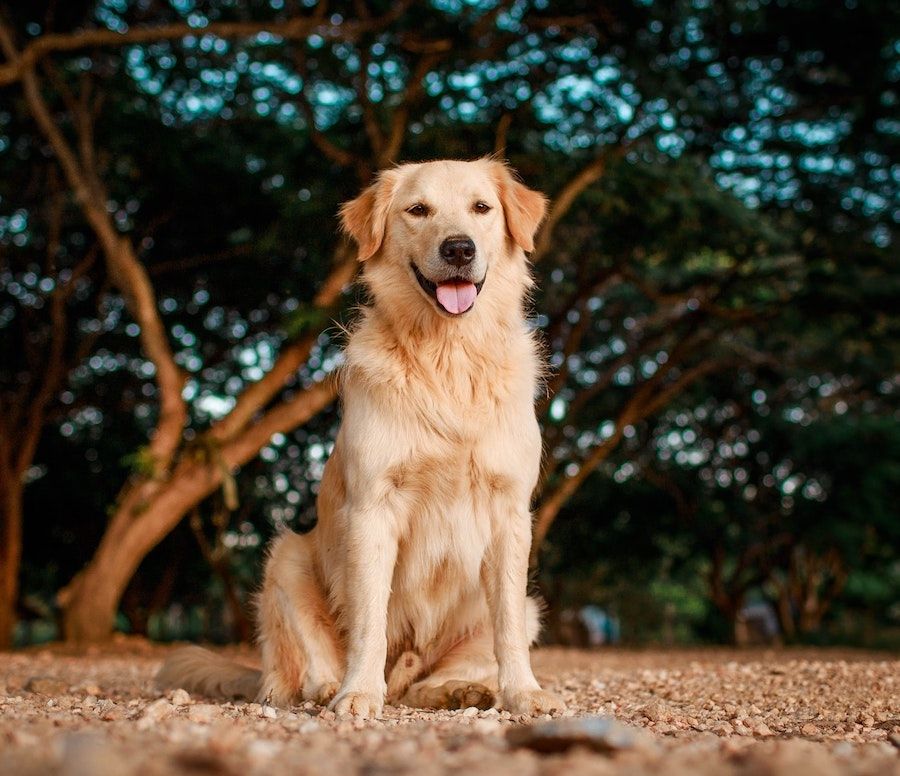
Unlike the dogs we’ve mentioned so far, the Golden Retriever followed hunters on expeditions and would recover game for them.
They have also worked with law enforcement officials and are good athletes. With this work history, one would wonder why they appear on this list of dogs with low prey drive.
The answer is simple: While they retrieve game for hunters, they don’t hunt.
This is an important distinction that explains how they can be bred for the woods yet have low hunting instincts.
Golden Retrievers are not ferocious, dominant hunting dogs. Rather, they are sweet, conscientious lovers.
Golden Retrievers take dogs as friends and extend this hand of friendship to cats and other small pets like rabbits.
They do not pose threats to any animal around them, so you don’t have to worry about wreckage in your absence.
Their sweet nature makes them somewhat easy to train, a trait that makes them good first-time dogs.
They are suitable for new and old pet parents. This doesn’t mean you should be lax with them, though. Every dog needs consistent, firm but gentle training.
This breed started out as Scottish before their recognition by the American Kennel Club in 1932.
The Golden Retriever is currently one of the most popular dog breeds in the United States.
7. Japanese Chin
- Group: Toy
- Life Expectancy: 12 – 14 years
- Weight: 1.8 – 3.2 kg
- Height: 8 – 11 inches
- Temperament: Intelligent, Loving, Loyal
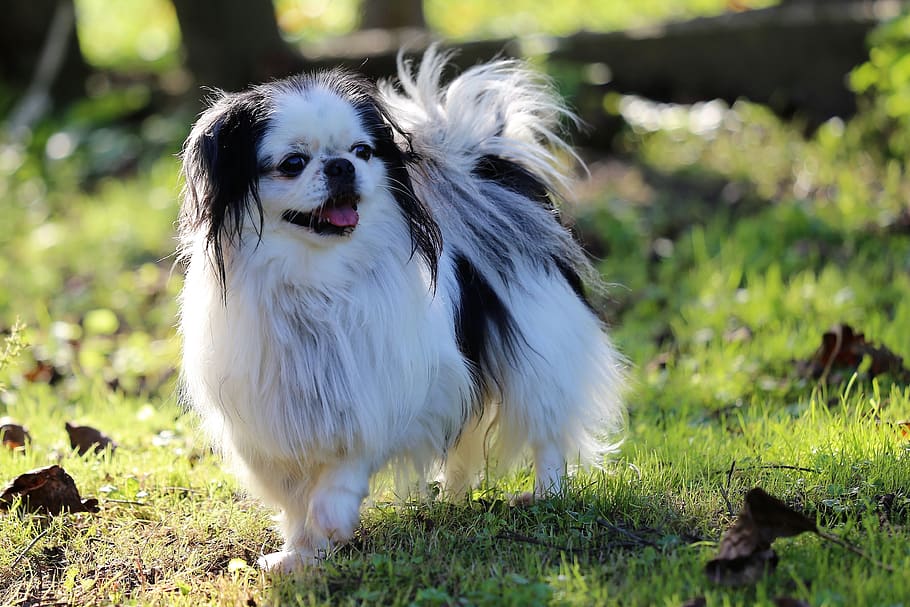
A calm breed known to have a feline attitude, the Japanese Chin self grooms, jumps, and bats at objects.
They are more likely to get acquainted with snobby cats than go on hunting mode.
Don’t count on them to go chasing after any animal. They’d rather conserve their little energy or ‘sing’.
Though a rare breed, the Japanese Chin is a much-loved companion dog by those who own him.
He’s a happy, pleasant, and friendly dog who remains faithful to his family.
Their low energy level makes them suitable for apartment living, so you can have one sitting in your living room in a busy city without a hitch.
They also don’t like being alone and do not cope well outdoors.
A quick learner, the Japanese Chin picks up on instructions and carries them out with ease.
This makes them fit for all forms of owners, novice and otherwise. They are sensitive to their environment and try to fit in the overlying mood.
This isn’t the dog that would break up a somber moment with an annoying bark or come to play when you feel tired.
When you’re quiet, they are more likely to be so. During your active days, they’d be active too.
The Japanese Chin has roots both in China and Japan but is often associated with Japan. He started out in the imperial courts of China before making his way to Japan.
He was a mystery till 1853 when Japan got into international trade. Popular individuals like President Franklin Pierce and Jefferson Davis owned a Chin.
8. Boxer
- Group: Working
- Life Expectancy: 9 – 15 years
- Weight: 25 – 32 kg
- Height: 21.5 – 25 inches
- Temperament: Playful, Bright, Energetic
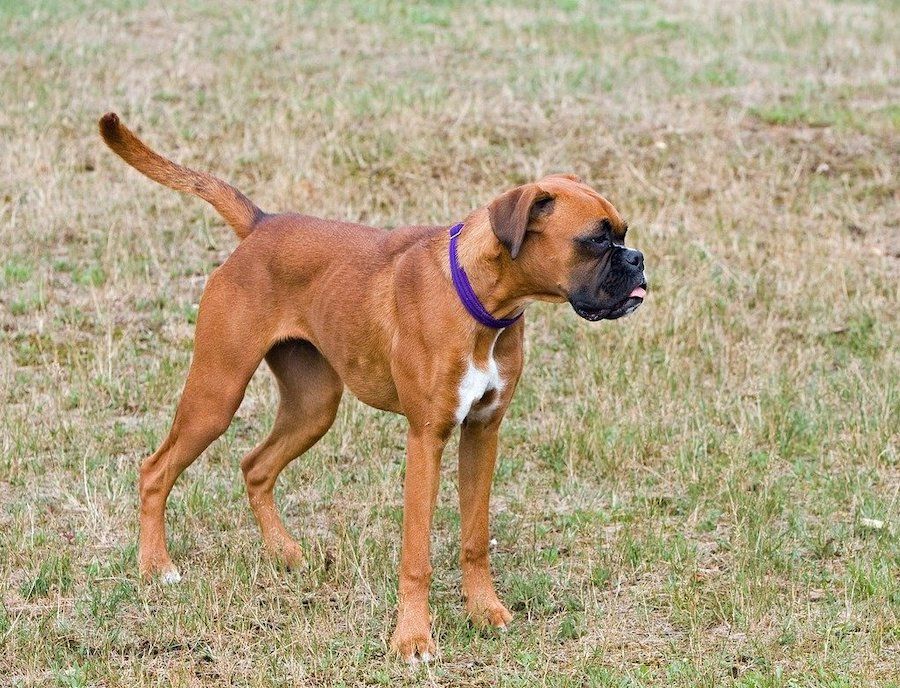
This breed’s name would make you imagine a powerful, muscular dog with an imposing demeanor.
While he does look so on the outside, The Boxer dog breed is a bundle of joy within.
The childlike playfulness of Boxers earned them the nickname ‘Peter Pan of the dog breeds.’
They are working dogs who were bred to guard, but they have a low prey drive and don’t use their high energy in pursuit of prey.
Boxers still work today and remain in the American Kennel’s Club category of Working Dogs.
Having said that, they have evolved to playing the role of family companions for those who can cope.
Their funny nature refreshes you after a bad day and they’d keep you entertained with crazy movements.
You may not be able to hold yourself from laughing around a Boxer. They remain loyal to family, as well.
They are more energetic than other dog breeds on this list and require intense exercise.
While you can have them in an apartment without a fuss, don’t ignore their need for exercise or they’d get restless.
Their high energy and exercise needs don’t mean they should remain outdoors.
Boxers don’t do well outdoors for long, mainly because of their low tolerance of climate change.
Originating from Germany, the Boxer is a descendant of the Bullenbeisser and Bulldogs, the former of which is now extinct.
The Boxer got developed in the 19th Century by a man named George Alt.
9. Great Pyrenees
- Group: Working
- Life Expectancy: 10 – 12 years
- Weight: 36 – 54 kg
- Height: 25 – 32 inches
- Temperament: Affectionate, Gentle, Fearless
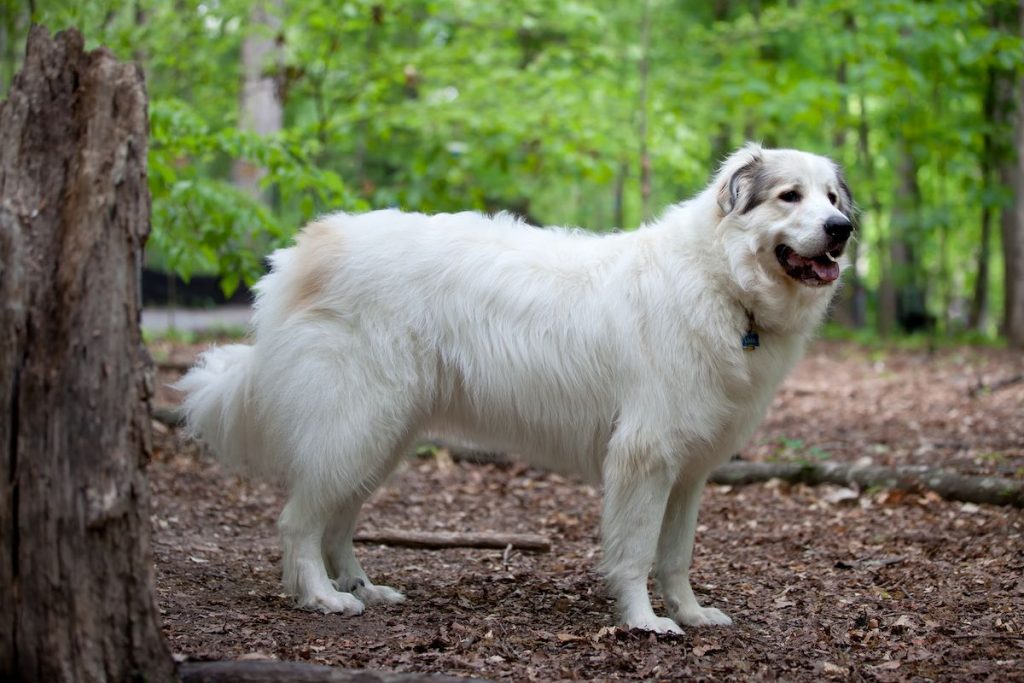
The Great Pyrenees is a protector, not a predator. He was bred to play that role, so he’d rather protect animals close to him than hunt them down.
As guardians of flocks, they have experience in looking out for animals. The Great Pyrenees is a worker-turned companion with a low prey drive.
The Pyrenees’ protectiveness doesn’t stop at animals, though. They watch out for their family and have a keen sense of hearing.
You won’t need an extra watchdog or guard dog with the Pyrenees in your home.
They have an amazing ability to separate friends from foes and would alert you if they sight someone strange. Their bark is loud enough to wake you up from a deep slumber.
A hard worker who thinks for himself, the Pyrenees is a proud dog who carries out whatever job is given to him with joy.
Their energy level is high enough to require a lot of exercises, but they can cope indoors even with their size.
Training can be a bit challenging because of the Pyrenees’ independent nature, but rewarding as you reap the rewards of a loyal, pleasant dog.
Without training, the Pyrenees becomes a pain as they will be uncontrollable, unfriendly, and aggressive.
The Great Pyrenees has its origins in the Pyrenees Mountains with ancestry that dates back to 3000 B.C.
10. Bichon Frisé
- Group: Non-Sporting
- Life Expectancy: 12 – 15 years
- Weight: 4 – 7 kg
- Height: 9 – 11 inches
- Temperament: Playful, Affectionate, Sensitive
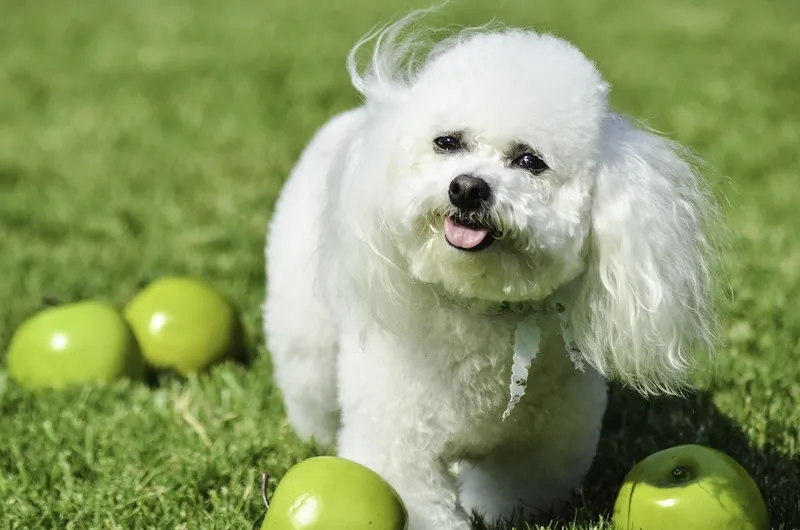
The Bichon Frisé is a lovely breed that gets confused with a Poodle. They are more likely to annoy cats with their barking than cause any harm.
People find them attractive, which isn’t a surprise. Who wouldn’t see a white, fluffy dog and not feel warm inside?
The Bichon Frisé is a relative of two other dog breeds on this list of dog breeds with low prey drive, the Maltese and Havanese. In addition, they are related to the Coton de Tulear.
Bichon Frises often come with a white, luscious coat, black eyes, and a curved tail.
Bichon Frises are delightful family pets, playful with everyone, and share happiness all around.
While he can be independent, he certainly isn’t a loner. Bichon Frises need to be around family, or they’d suffer from separation anxiety.
They are not good fits for busy 9 to 5 workers with no time to meet the emotional needs of an attention-loving dog.
Training comes easily with this intelligent, sweet breed. New owners will find them a refreshing first-time experience, and they come highly recommended if you’ve never owned a dog before.
Obedience training and socialization are some ways to make them better canines.
The Bichon Frise’s origin is unclear, but the strongest theory holds that they originated from the Mediterranean.
11. Vizsla
- Group: Sporting
- Life Expectancy: 12 – 14 years
- Weight: 18 – 29 kg
- Height: 21 – 24 inches
- Temperament: Affectionate, Gentle, Energetic
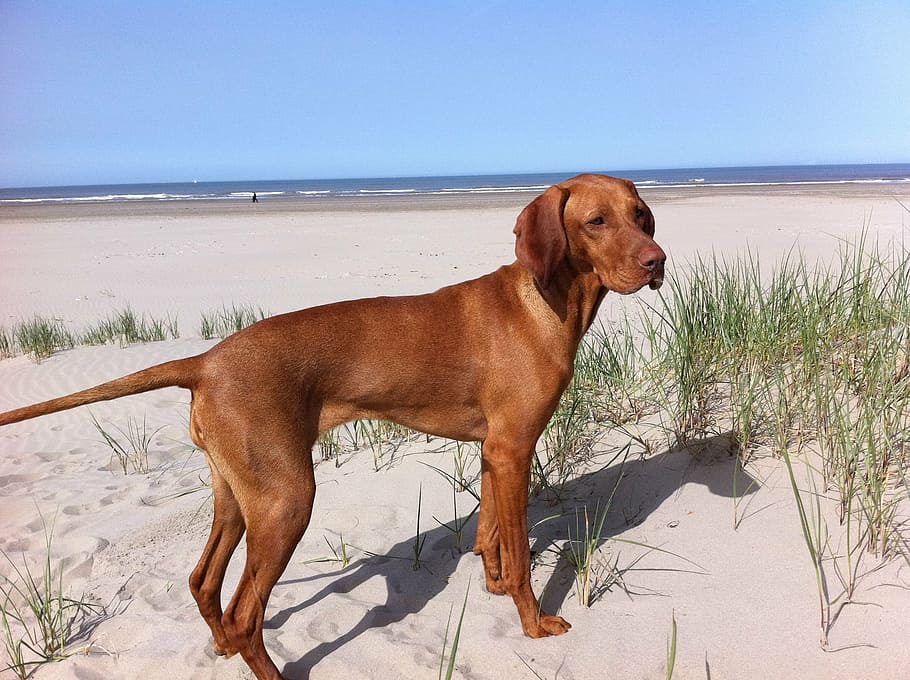
The Vizsla is another lover who—like the Golden Retriever—has some hunting blood in him.
He played a similar role of retrieving game for hunters, which would make the average onlooker feel he’s a hunting dog.
As a hunting dog, he should have a high prey drive, right?
Wrong, actually.
While the Vizsla points and retrieves game, he is not a hunting dog. Vizslas aren’t the ones who chase after prey, they don’t have a high instinct for that.
What the Vizsla really needs is love, attention, and good exercise.
Like the Retriever but unlike many others on this list, the Vizsla is not an apartment dog.
His high energy and background make him prefer the outdoors.
The Vizsla develops a strong attachment bond with his owner and would often prefer to remain close to loved ones.
This may be a problem if you didn’t sign up for a clingy dog. That said, his love for attention and closeness doesn’t mean he’s a couch potato.
The Vizsla is a hard worker who loves having things to do. He is capable of playing many roles.
He can move into the woods as a hunter or comfort someone as a therapy dog.
The Vizsla originated from Hungaria and is sometimes called the Hungarian Pointer.
His ancestors were hunting dogs, until it got to his turn and hunting became a thing of the past.
12. French Bulldog
- Group: Non-Sporting
- Life Expectancy: 10 – 14 years
- Weight: 9 – 13 kg
- Height: 11 – 13 inches
- Temperament: Playful, Bright, Alert
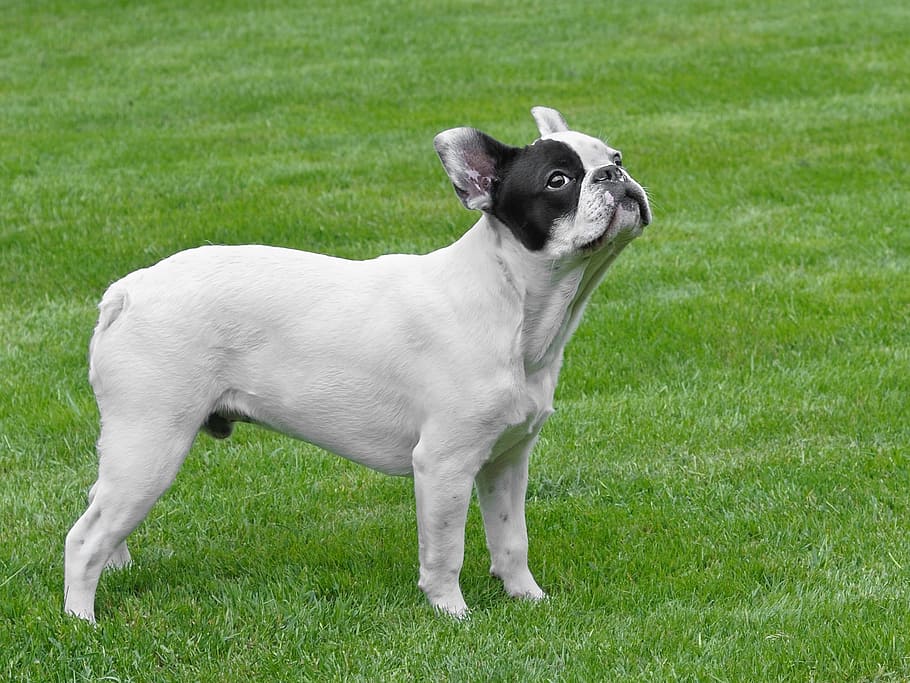
A far cry from what the name might imply, the French Bulldog is an easygoing, laid-back dog who prefers chilling to chasing.
A smaller version of the Bulldog we know, the French Bulldog shatters the stereotype of Bulldogs being aggressive, ferocious, and fighters.
Why fight when you can love?
Bred to be a companion dog, the French Bulldog hasn’t evolved from that role. If anything, he takes it seriously.
A playful, mischievous breed, the French Bulldog is like that kid who frustrates you but also brightens your day.
Unlike other bulldogs, the French Bulldogs don’t ask for much space. He doesn’t like being a burden and is content with a little exercise.
After that, he’d watch television or follow you as you go about your duty.
Speaking of ‘follow’, the French Bulldog is a sucker for attention and companionship.
This isn’t the dog to get if you need a canine who enjoys his own company. French Bulldogs want to be around you all the time, and would rather be playing with you than pursuing a rabbit.
The ‘French’ in the name notwithstanding, the French Bulldog originated in England.
The purpose of breeding the French Bulldog was to get a smaller, less hefty Bulldog.
13. Old English Sheepdog
- Group: Herding
- Life Expectancy: 10 – 12 years
- Weight: 30 – 46 kg
- Height: 21 – 24 inches
- Temperament: Adaptable, Intelligent, Bubbly
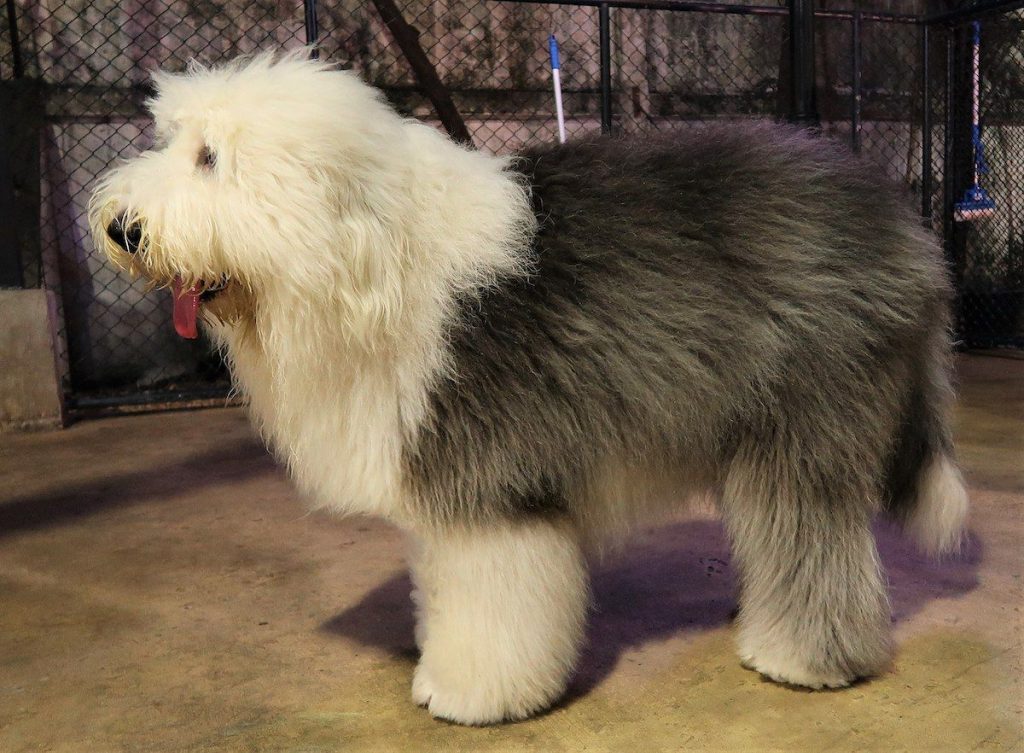
The Old English Sheepdog and the Great Pyrenees share one trait in common: they are protectors, not predators.
You can’t miss that bushy coat that gives this breed a ‘rough but cool’ appearance.
The Old English Sheepdog worked in the farm, not the woods. He helped farmers with driving cattle and sheep. So, he’s more likely to guide your cat than chase him.
In the family, the Old English Sheepdog’s favorable disposition has made him much loved and appreciated.
If you watch children’s shows a lot, chances are you’d see a shaggy dog featuring in a good number of them. The reason for this media popularity isn’t far-fetched.
He’s a good companion with children and would protect them from harm, same as adults.
The Old English Sheepdog is a funny, playful dog who’s always up for a game and some fun.
His intelligence is high, a quality that helped him on the farm and serves him in modern homes as he protects his loved ones.
With 100 pounds to his size, the Old English Sheepdog is a biggie. This size gives him an advantage in work.
Taking care of this dog may be daunting, especially the hair. That full, shaggy coat needs high maintenance, and if grooming isn’t your cup of tea then look for another breed.
However, you could also hire a groomer, but it’d cost you.
Though his origin is unclear, sources have it that England is where this breed came from. Some dogs who might have been his ancestors are the Scottish Bearded Collie and the Russian Owtchar.
14. Havanese
- Group: Toy
- Life Expectancy: 13 – 15 years
- Weight: 4.5 – 7.3 kg
- Height: 8.5 – 11 inches
- Temperament: Gentle, Intelligent, Playful
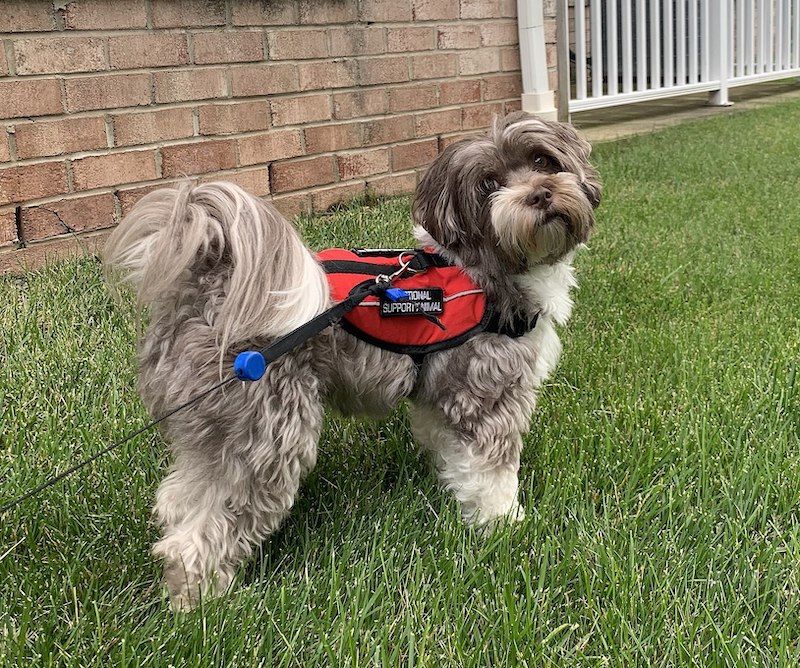
Yes, you guessed it right. Havanese has ties with Havana Island, and we’d explore that in the last paragraph. For now, let’s note something important.
Given the choice between a party and hunting, the Havanese will show up at the former with dancing shoes.
The Havanese is another companion dog by origin and has retained that status. He earned the nickname ‘Velcro Dog’ because he’s always around people.
The Havanese is a housedog, not an outdoor canine. Time alone isn’t good for him.
His qualities don’t end at being a lapdog, though. The Havanese is a worker, as well.
He has been therapy and assistant dog, entertained people as a performer, and has been used to eradicate termites. He’s also highly energetic and loves sporting activities like flyball.
Another good trait of the Havanese is his intelligence. Be cautious, though. The Havanese can become cunning, especially if you spoil them.
Their cuteness may tempt you to overlook their excesses. If you keep giving in to that, you’d end up with a canine case.
The Havanese is from Cuba and has been a companion to the Cuban royal class in the 19th century.
15. Beagle
- Group: Hound
- Life Expectancy: 12 – 15 years
- Weight: 9 – 11 kg
- Height: 13 – 15 inches
- Temperament: Curious, Excitable, Amiable
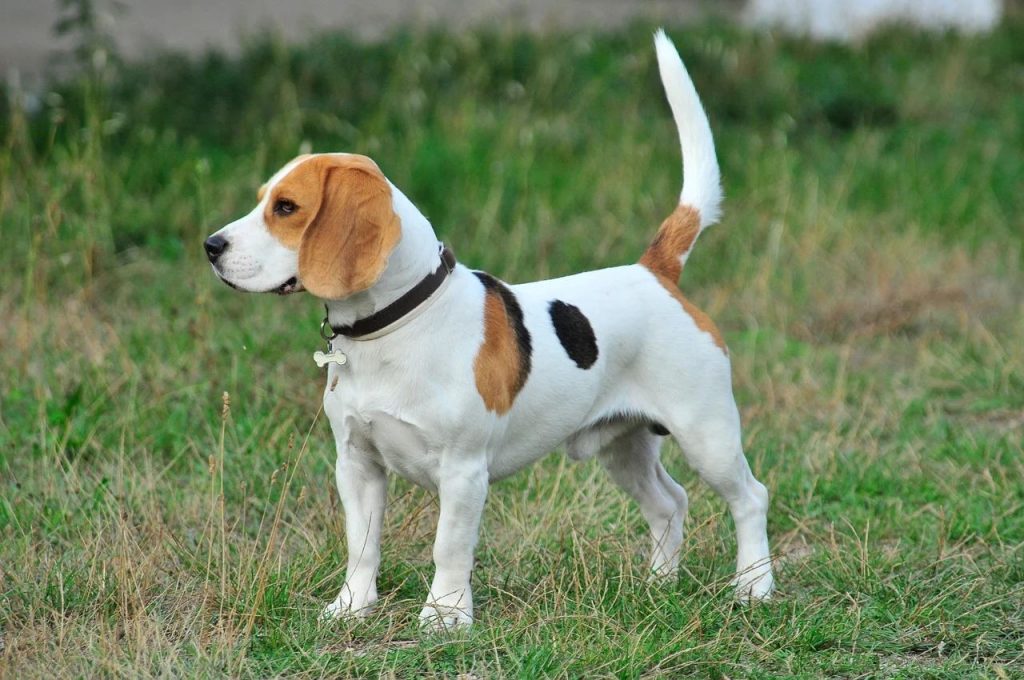
The final dog breed with low prey drive on our list is the Beagle—a small, active breed. While they are scenthounds who tracked down small prey, the Beagle is not a crazy hunter with a high hunting instinct.
The Beagle wasn’t initially bred to be a companion dog but fits well into households. Escaping the appeal of her eyes is hard, and her lovely temperament is sure to get you hooked.
A playful, happy, and extroverted dog breed, the Beagle is a comedian out to crack your ribs. He’s also cunning with a naughty streak, a source of frustration to many owners.
Far from being a guarded watchdog or guard dog, the Beagle is a friend to everyone. You don’t have to worry about your pet chasing visitors away.
The Beagle would prefer to get acquainted with your guest. Don’t let your guest get to their food, though. The Beagle doesn’t mess around with food.
Be sure you’re ready for an energetic dog before you get the Beagle.
With so much energy to spare, the Beagle will get bored and restless if you leave him at home with no exercise. They need to have an outlet to use up their energy.
The Beagle’s origin is as unclear as the Bichon Frise. Their ancestor might have been the now extinct Talbot Hounds.
Related: Dog Breeds With Pink Noses & Why They Have It
FAQs
How do you know if your dog has a low prey drive?
When a dog has a low prey drive, they tend not to be driven towards hunting prey. The instinct to chase prey is low and can be easily contained.
What is the difference between aggression and prey drive in dogs?
Sometimes, prey drive and aggression are confused because of the ferocity dogs show when acting.
However, while prey drive certainly is aggressive to prey, it should be separated from aggression. Aggression in dogs is an emotional reaction that can be worked on. Prey drive, by contrast, is instinctive.
Wrap Up
All dog breeds on this list of dogs with low prey drive have things in common. Some share similar ancestry, others the same role.
But what groups them together is their low prey drive, a quality that draws them to people who want to have many pets and still keep the peace.
Do remember that a low prey drive is not equal to a NO prey drive. Some of these breeds may go on a chase every now and then. It will not be frequent, though.
Also Read:

